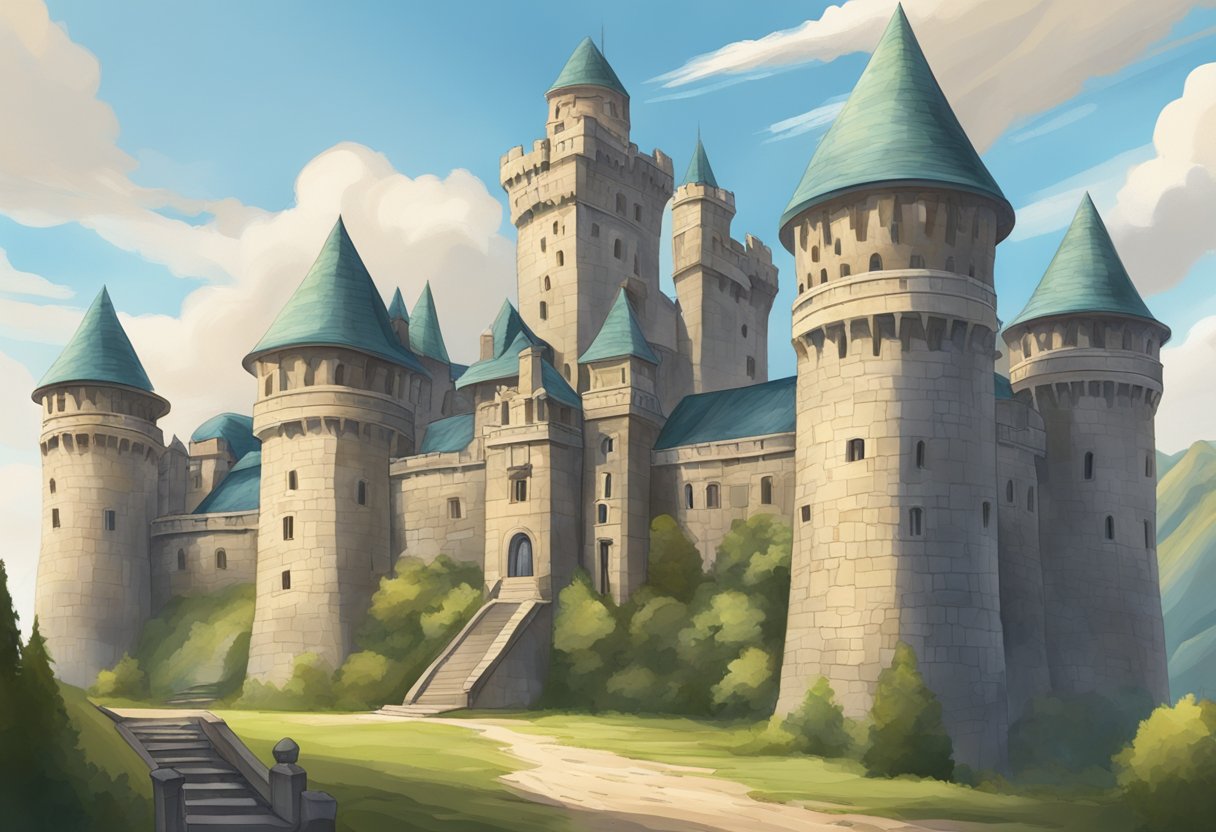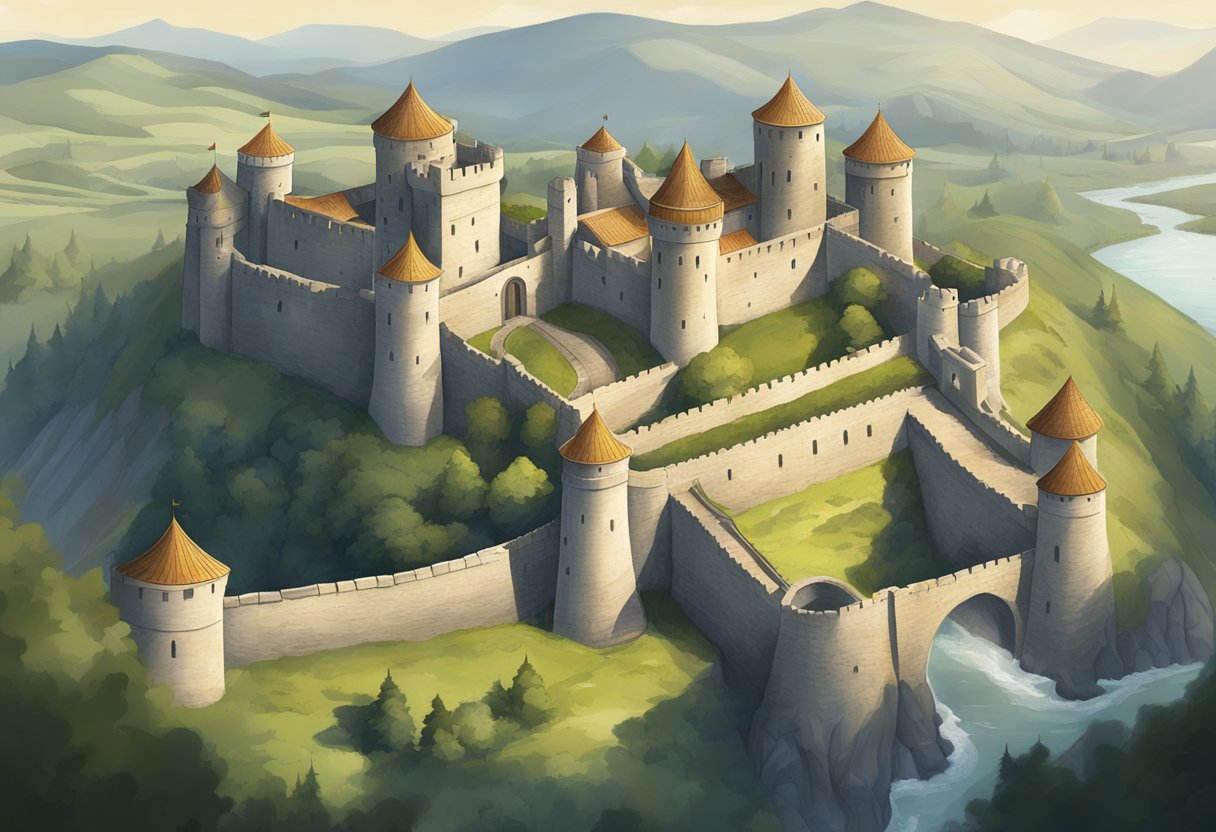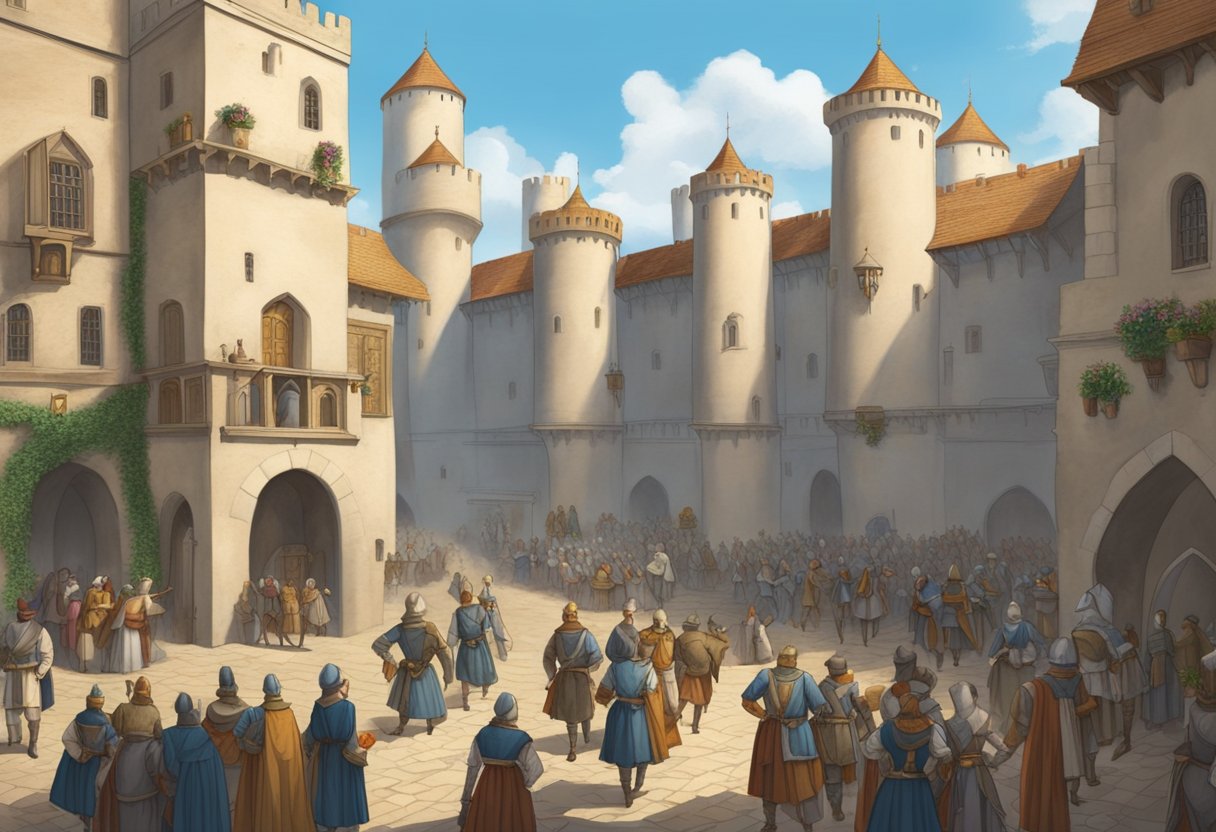Stepping into the world of medieval architecture is like joining a time-travelers’ gala, with stone castles being the grandiose venues hosting history’s most epic events. Castles epitomize the medieval landscape, and one can’t help but wonder about the walls that have witnessed a thousand tales. So, if you ever pondered whether these fortresses were fashioned from stone or some other mystical material hewn from the bowels of the earth, let’s set the record straight—castles were indeed made of stone, with the occasional involvement of wood in the earlier stages of their evolution.

Throughout history, stone has remained the go-to material for building these impressive strongholds due to its abundance and durability. From the rugged simplicity of early motte-and-bailey designs to the intricate grandeur of later stone behemoths, the transition from wooden pallisades to stone fortifications represents not just an architectural shift but a societal one. Stone castles became synonymous with power and permanence, intended to withstand sieges and serve as lordly residences. They were the ultimate medieval statement piece: “Here I stand, as solid as the rock I’m hewn from.”
Key Takeaways
- Castles are medieval architectural marvels predominantly constructed from stone.
- The transition from wood to stone in castle construction marks a significant evolution in defense and durability.
- Stone castles were multifunctional fortresses, emblematic of power and societal status.
From Wood to Stone: The Evolution of Castles
https://www.youtube.com/watch?v=bar2sozFRLA&embed=true
In the realm of medieval architecture, the transformation from timber fortifications to majestic stone castles was a game-changer in feudal real estate.
Rise of the Stone Keep
Stone keeps began emerging as the VIPs of defensive structures. They swapped out wood for stone—a trend as popular as avocado on toast in today’s brunch scene. Builders of the time shifted from timber to stone keep castles, which were less flammable, had the muscle to withstand sieges, and offered a posh image that had nobility all over Europe saying, “I’ll take two.”
- Shell Keep Castles: An intermediate step mixing the old and the new, like a medieval mash-up.
- Stone Keep Advantages:
- Fire Resistant: Say goodbye to the fear of a stray candle turning your home into a bonfire.
- Durability: These castles aged better than fine wine.
- Status Symbol: Nothing screamed “noble” like a hulking stone castle on the horizon.
Bye-bye, wood! Hello, majestic stone fortifications.
Motte-and-Bailey Makeover
The original motte-and-bailey castles were all about that timber life – quick to erect and easy on the pocket, but they had a high-risk factor of turning into a surprise barbecue. In a whirlwind of home improvement, the motte-and-bailey got a full-blown stone makeover. This upgrade squashed the fire issue and beefed up defense, all while maintaining the classic layout of a motte (that big mound of earth) and a bailey (the enclosed courtyard). Lounging atop the motte, the revamped stone keep was the cherry on this feudal sundae.
- Transition from Wood to Stone: A spectacular upgrade akin to swapping a flip phone for a smartphone.
- Balancing Act: Matching the convenience of timber while introducing the resilience of stone—it was like having your cake and fortifying it too.
Fortifications and Defenses: More Than Just Walls

Castles were not just stone behemoths standing tall on the field; they were intricately designed fortresses, cleverly rigged with a variety of defenses to keep enemies at bay and lords at ease.
Every Castle a Fortress
A castle’s might lay not only in its imposing walls but in the layered defenses that surrounded them. They all embraced the motto: “the more obstacles the better.” For instance, the serpentine moats that encircled many fortresses weren’t just for swimming lessons – they kept attackers wading in trouble before they could even reach the walls. Then there were the cunningly placed battlements, where defenders practiced their ‘whack-a-mole’ skills with oncoming foes.
- Moats: Surprisingly wet ditches, often with an unadvertised alligator bonus.
- Battlements: Not just for dramatic monologues, but also great for hurling objects with bad intentions.
- Ditches: Essentially moats without the prestige, these were the trenches before the trenches became cool in the 20th century.
The Art of Castle Defense
The medieval military was nothing if not inventive. They turned architecture into an art form with a lethal edge. The keep, essentially the ‘safe room’ of its time, where nobility could hide and discuss the latest trebuchet resistant fabrics. Then, imagine the surprise of attackers when they met the business end of arrow slits, narrow openings that allowed defenders to shoot arrows while being the nightmare of medieval door-to-door salesmen.
- Arrow Slits: Great for archery enthusiasts, not so great for anyone on the business end.
- Keep: The ultimate ‘do not disturb’ zone, where one could sip tea while under siege.
These multifaceted fortifications exemplified the perfect blend of protection and military strategy, ensuring that castles were more than just piles of rocks—they were masterclasses in medieval home security.
Castle Life: Not Just for Lords and Battles

Contrary to popular medieval myth, castles weren’t just for the posh and the clanking of armor. Lords and ladies luxuriated in comfort while lesser-known domestic doings drummed the daily beat of castle life.
Daily Grind in a Noble Residence
In the shadows of grandeur, the noble residence throbbed with ceaseless activity. Servants scuttled about, ensuring the lord’s domestic bliss was as free from peasantry as his prestigious lineage demanded. Tasks were aplenty:
- Chamber Maintenance: Maids dusting every nook to keep the drafty chambers less cobwebby and more comely.
- Kitchen Duty: Cooks slaving over a hot hearth to transform carcasses to cutlets.
A noble’s abode was more than a backdrop for baronial banter; it was a bustling hive of “to-dos.”
Feasting Halls and Drafty Chambers
Feasting halls were the stage for displaying prestige, where nobles could gorge on gastronomy and gossip in equal measure. Yet amid the merrymaking, comfort was a capricious guest:
- Banquet Preparations: A logistic ballet, aligning pantler, butler, and carver in a dance of dining diplomacy.
- Atmospheric Antics: Goblets gleamed, but the draft added an atmospheric bite requiring the occasional shawl shuffle.
Here, stone walls echoed with tales dripping with mead and mirth—a place where one’s social standing was as palpable as the candle’s glow.
The halls and chambers of a castle were far from mere relics of medieval majesty. They were the heart of noble living, pulsating with the daily rhythms of those who strove to keep up the facade of feasting and luxury, while also dealing with the drafty, less glamorous aspects of castle dwelling.
The People Behind the Stones: Masons at Work
https://www.youtube.com/watch?v=gbwbi6uurG0&embed=true
Before the majestic castles graced the landscape with their presence, there was an orchestra of hammer and chisel, where masons and craftsmen played the lead roles in crafting these stone giants, brick by meticulous brick.
Crafting Castles Brick by Brick
In the medieval workshop, masons were rock stars of construction, literally. These artisans, with skilled hands and a keen eye for geometry, were responsible for transforming raw stone into the elaborate walls and towers that define the quintessential castle.
- Masons: The artists in stone, chiseling away to create architectural marvels.
- Carpenters: Their wooden masterpieces provided the scaffolding that allowed masons to reach the heavens.
- Engineers: Grand planners ensuring that the castle wouldn’t tumble at the first sign of a huff and puff.
- Smiths: The unsung heroes, fashioning tools that were worth their weight in gold… or at least in iron.
Stone building took patience and precision. It wasn’t just about stacking stone on stone. There was a method to the masonry madness: the careful shaping of each block and the strategic placement that only they knew the secret to. Each castle became a story written in stone, authored by these very craftsmen.
Quarrying: The Rock Solid Start
A castle’s might lay not only in its mason’s ingenuity but in the very bones of the earth—it began at the quarry.
- Quarries: Where the raw beauty of future castles lay hidden, in the rough embrace of the earth.
- Masons: They saw not just a rock, but a piece of the castle puzzle waiting to be released.
- Carpenters and Engineers: Partners in crime, figuring out ways to move massive stones without the help of modern machinery.
The quarry was both the birthplace and the testing ground. It was here that the building materials for the stone behemoths were born, cleaved from the earth by the combined might of man and metal. It was one part strength, one part skill, and a dash of “Please don’t let this stone squash me.”
In conclusion, let’s raise a chisel to these unsung architects of yore—may their stone symphonies stand the test of time!


Leave a Reply